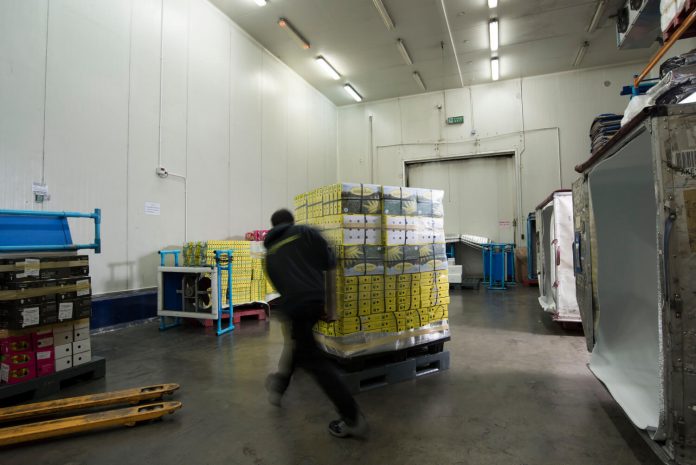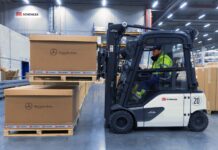
Shipping temperature sensitive cargo around the world that must be kept icy cold is no easy feat. Innovations over the years have made shipping this type of cargo easier and more effective, but even with all of our technological advancements, keeping shipments cool and secure is still an issue to this day. Without proper planning and guidance, gaps in the cool chain can pop-up and cause problems.
While a thorough analysis of the entire supply chain is the best way to weed out any gaps, keeping in mind the critical points where these gaps are most likely to form helps to solve the easiest issues that may cause stress on a cool chain. To get a better understanding of this, we spoke with Mr. Christopher Reichert, Operations Manager Freshport Asia, to get some tips from him on where he sees issues everyday with cool care shipments and what areas he thinks the industry could improve upon.
1.Pre-cooling at the Source
Perhaps one of the most important areas that should be addressed from the very beginning is the pre-cooling that should be done at the origin. In the case of sensitive food perishables like asparagus, this becomes even more imperative.
Only a few hours after harvesting, vegetables like this will quickly deteriorate to the point where they begin to wilt and must be thrown away. Mr. Reichert spoke about how important this first step is in the process.
“We’ve worked with farmers in the past to develop cheap and effective cool rooms to store produce. It’s also great to have cool trucks available that works as both storage and can transport these sensitive products easily and securely. However, I know it’s not realistic for every operation to have this in place. I would advise at the very least letting produce chill a couple hours before transporting it to the cargo terminal. If it’s at the farm when it’s harvested, dunk it in ice water to get the high temperature out of it. Get it out of the sun and into some kind of temperature controlled environment. At the very least, it could go into an aircon room, it’s much better than being out in the heat outside. Every minute, every hour you can keep produce cool extends the shelf life of the product.”
2. Correct Packaging
An area that just about any shipper could improve upon is how they package their products. Temperature sensitive products need to be able to handle the rigors of extreme cold and heat that shipments can experience throughout their journey. To accomplish this and to reduce the number of damaged products, correct packaging is an important step.
Mr. Reichert recalled that, “We recently had a shipment of fresh fruit come into the cargo terminal that looked relatively well packaged. The shipment was wrapped and sealed well and had a reflective cover to help keep the shipment cool. Everything seemed to be in order, until I noticed something odd at the base. Inspecting further, I noticed this well wrapped shipment was sitting directly on top of the pallet with no insulation or protection on the bottom, basically leaving it to cook like it was on a hot plate. The shipper got almost everything correct, but missed an obvious area. You really need to have your eyes open and to see points of failure like this.”
3. Develop Smarter Packaging
Beyond just correctly packaging shipments, advancements need to be made in the packaging itself it we are to truly keep the cool chain unbroken. One of the biggest culprits to waste throughout the cool chain is Styrofoam packages. Due to its cheap price, it’s still widely used in cool shipments today.
Mr. Reichert said, “I see this inefficient way of shipping cool products every day. It’s both bulky and environmentally unfriendly. We regularly receive fresh fish that’s shipped in foam boxes, which 25% of the cost of every shipment is ice and water. I often ask myself is something could be done better. Possibly, you could use gel packs or another technology to ship these fresh products, but no research is being done currently. We’re just stuck in the status quo. I’ve seen how it’s handled and stored, it’s hard to believe that it stays in a good temperature range with this type of packaging. Coming up with another way to use packaging that can be recycled should be a top priority, we need to find a better way beyond using this outdated material.”
4. Temperature Monitoring
Utilizing monitoring devices is one of the easiest and cheapest ways get a bird’s eye view of a cool chain. Data is power, and having crucial data about a shipment throughout its journey can help identify cracks in the chain. With this information, it’s much easier to see where a temperature spiked occurred and disrupted an otherwise flawless cool chain. A process can then at least begin to fix the problem. Without this data, it would be like trying to hit a bullseye blindfolded, you might get lucky but it’s extremely difficult to hit the mark.
Mr. Reichert recalled, “A shipment of flowers that recently went through our facility came pre-cooled and seemed to be packaged very well. Vase life is the most imperative factor with flowers, so keeping them cool is extremely important. The vehicle that came to pick the flowers up was an unprotected truck, that when I measured it, was well over 35 degrees. All the preparation and care that went into this shipment was being wasted. They got almost all the way there, but fumbled at the end. You don’t have to settle, by using monitoring devices a shipper could easily see that it was at this point where the chain was broken. It may add a little to the cost of the shipment, but small monitoring devices can make a world of difference.”
5. Education is Key
The real backbone to making meaningful change is educating everyone about these issues. Mr. Reichert said that he would like to see more of a push for education to really bring about sustainable change.
“For say the local farmer, they may have no idea about the way they should be keeping their produce cool and secure. Some of the larger retailer buyers have already smartened up to this, and have sent representatives to these farms to educate them. Shelf life is very important to these companies, so they are proactive in trying to take control of their supply chain. However, for wide-spread education, I think a government funded effort could make all the difference. Especially for agricultural dependent countries, producing and shipping high quality products could be a boon for the economy. By collaborating and getting everyone involved and at the table, a real effort can be made to implementing meaningful changes to the way we ship our cool care products.”
อัพเดตข่าวสารและบทความที่น่าสนใจในอุตสาหกรรมโลจิสติกส์ก่อนใคร ผ่าน Line Official Account @Airfreight Logistics เพียงเพิ่มเราเป็นเพื่อน @Airfreight Logistics หรือคลิกที่นี่












